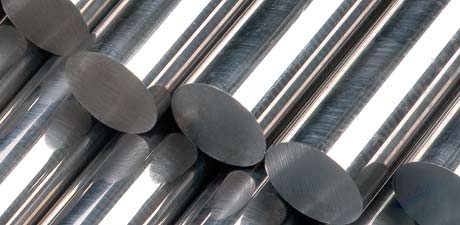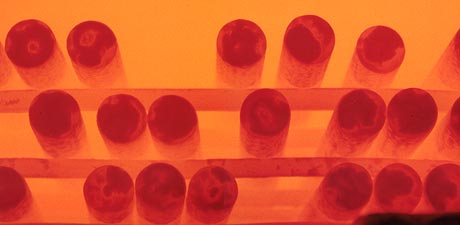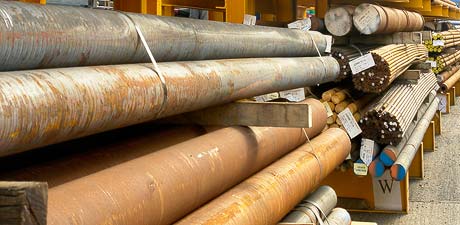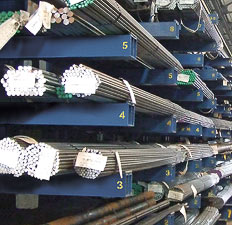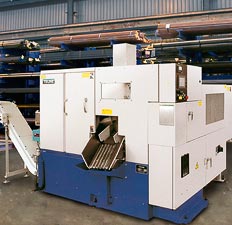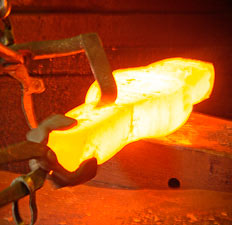Technical Data
Metallurgical Terms
Decalescence.
(See Critical Points).
Decarburization.
The loss of carbon at the surface of steel as a result of heating in an atmosphere which converts the carbon of the steel to a gaseous form.
Deoxidation.
The final operation in the production of “killed” steels, when elements such as silicon or aluminium are added to stabilize the dissolved oxygen. This prevents it reacting with the carbon to form carbon monoxide which would form blowholes during subsequent solidification.
Deseaming.
(See Scarfing).
Descaling.
(a) The removal of scale from the surface of steel by mechanical or chemical means, e.g., by sand or shot-blasting, tumbling, flame descaling, or pickling. (See Pickling).
(b) The removal of scale from the inner surface of boilers and tubes.
Diamond Pyramid Hardness Test.
(See Vickers Hardness Test).
Die.
(a) A metal block used in stamping operations. It is pressed down on to a blank of sheet metal on which the pattern or contour of the die surface is reproduced.
(b) An internally threaded steel block provided with cutting edges for producing screw threads.
(c) In drop forging, steel blocks usually supplied in pairs with part of the impression in each block, the lower die being attached to the anvil whilst the upper one is attached to the hammer itself and moves up and down with it.
(d) In wire-drawing, a small plate or body containing one or more tapering holes called die holes.
(e) A tool having a prepared hole through which tubes are pulled in cold drawing.
(f) In punching or piercing, the bottom tool into which the punch is guided giving clearance between punch and die, which results in shearing of the metal.
(g) In resistance welding, a member usually shaped to the work contour to clamp the parts being welded and conduct the welding current.
(h) A device used in forge welding primarily to form the work while hot and apply the necessary pressure.
(i) In powder metallurgy, the part or parts making up the confining form in which a powder is pressed.
Die Casting.
(a) The process of pouring metals into final shapes in metal moulds. If the metal is forced into the mould the process is known as pressure die casting, but otherwise it is known as gravity or permanent mould die casting. The process is usually applied to alloys having relatively low melting points, e.g., tin, zinc, lead, aluminium or magnesium base alloy. The advantages of this process are the high precision of the castings so produced and the high rates of production which may be achieved.
(b) The product of the die casting process.


